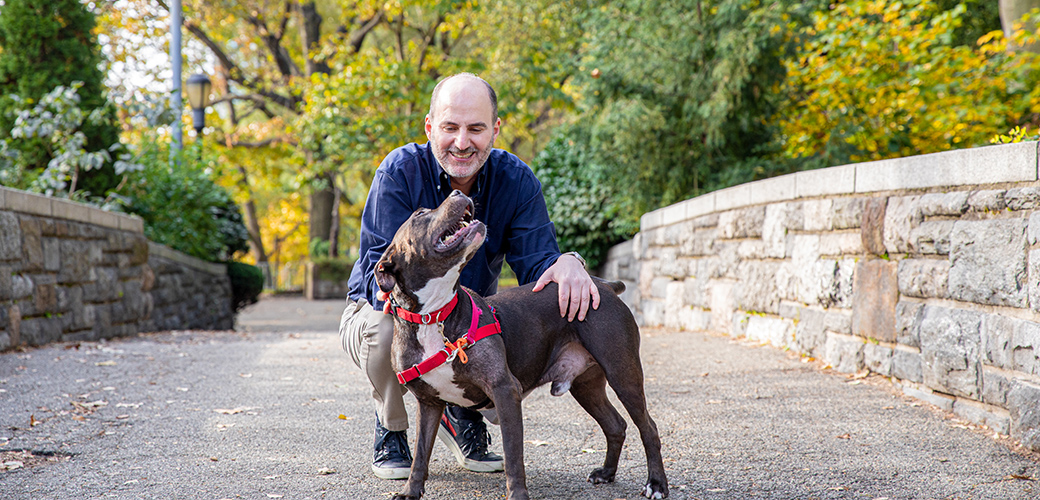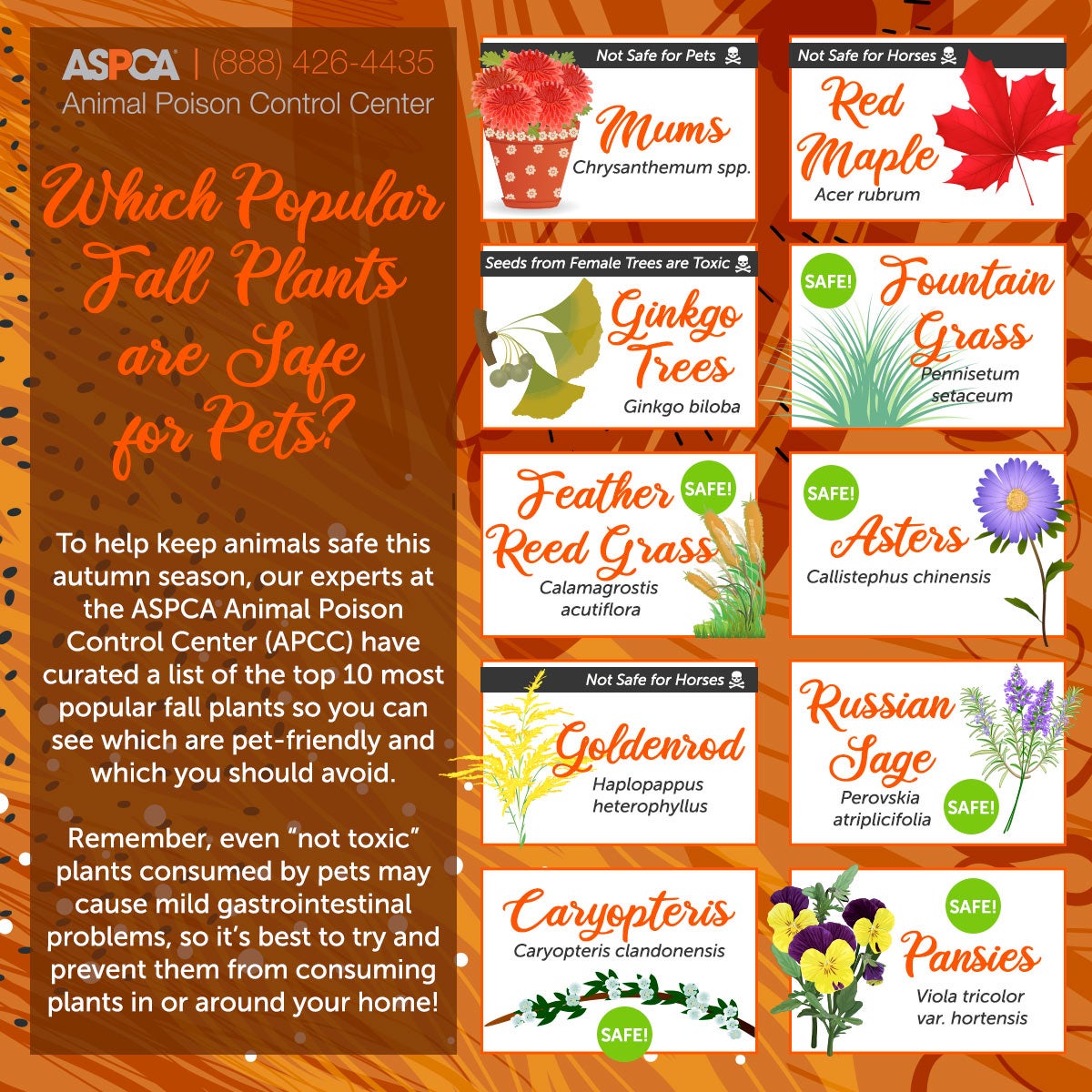

Though we are already a few weeks into fall, if you’re still asking where summer went, you’re not alone! It’s hard enough keeping up with seasons changing in what seems like the blink of an eye, so it may be even harder for pet parents to keep track of what plants are safe to have around pets each season. But not to worry, that’s what the ASPCA Animal Poison Control Center (APCC) is here for!
To keep your four-legged friends safe, happy and healthy as the weather gets cooler, the APCC has created this list of the top 10 most popular fall plants so you can see which are pet-friendly and which are not.


- Mums (Chrysanthemum spp.) are certainly the most popular fall flower, but they are considered toxic to dogs, cats and horses. If ingested, symptoms can include vomiting, diarrhea, hypersalivation, incoordination and dermatitis.
- Red Maple (Acer rubrum) trees are beautifully vibrant during fall and are considered non-toxic to dogs and cats. However, these tree’s leaves are toxic to horses—especially when wilted. If consumed, symptoms can include anemia, weakness, dark urine, difficulty breathing, abortion and possibly death.
- Ginkgo Trees (Ginkgo biloba) produce gorgeous yellow foliage in the fall, but it’s important to know that there is a difference between male and female ginkgo trees. Males are considered non-toxic to pets, but the female trees have seeds that contain ginkgotoxin which is considered toxic to pets. If ingested, there is a potential for vomiting, irritability and seizures. The easiest way to tell the male and female trees apart is by the fruit. The female tree’s fruit carries an incredibly unpleasant smell, which would also be nasty if your pet decided to roll in it!
- Fountain Grass (Pennisetum setaceum) are beautiful in bloom and are considered non-toxic to pets so, plant away!
- ‘Karl Foerster’ Feather Reed Grass (Calamagrostis acutiflora) while this grass is great to grow in your yard and non-toxic to plants, it does have sharp points that could scratch your pets, so be careful!
- Asters (Callistephus chinensis) are typically sold around the same time as mums, but unlike mums, these plants are considered non-toxic to dogs, cats and horses.
- Rayless Goldenrod (Haplopappus heterophyllus) isn’t considered toxic to dogs and catsm but this yellow plant is toxic to horses. Horses eating one to ten percent of their body weight in the plant can have potentially deadly effects. Onset of signs can occur after two days or up to three weeks and includes: incoordination, muscle weakness and tremors, elevated heart rate, cardiac arrhythmias, fluid accumulation and swelling of the nervous system, profuse sweating and inability to swallow.
- Russian Sage (Perovskia atriplicifolia) is a purple plant considered non-toxic to pets!
- Caryopteris (Caryopteris clandonenis), another purple plant, is considered non-toxic to pets so feel free to add it into your garden this fall!
- Pansies (Viola tricolor var. hortensis) are also considered non-toxic to pets and can even love through a little frost! Add these pet-safe plants to bring gorgeous fall colors to your yard!
While considered “non-toxic,” all plant material consumed by pets may cause mild gastrointestinal problems, so it’s best to try and prevent them from consuming plants in or around your home. You can see the APCC’s full list of toxic plants for more information.
If you suspect your pet has been exposed to any poisonous substances or potentially toxic plants, contact your veterinarian or call the ASPCA Animal Poison Control Center at (888) 426-4435 immediately.
Source: Read Full Article



